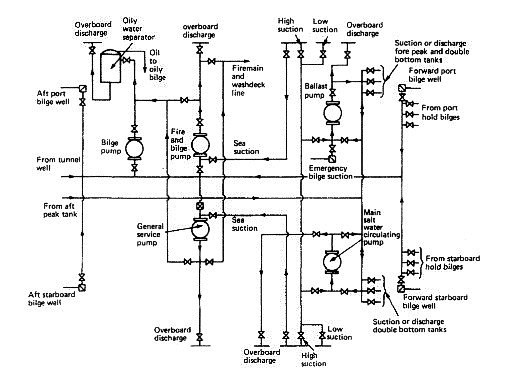
Bilge and Ballast Systems for Ships Machinery Spaces
The bilge system is used to remove small quantities of fluid that
have leaked or condensed into a dry space. The system serves the
machinery spaces, cargo holds, cofferdams, voids, stores, tunnels
and pump rooms. Each space has its own piping but the pump is
likely to be shared.
The bilge main is arranged to drain any watertight compartment other than ballast, oil or water tanks and to discharge the contents overboard. The number of pumps and their capacity depend upon the size, type and service of the vessel. All bilge suctions must be fitted with suitable strainers, which in the machinery space would be mud boxes positioned at floorplate level for easy access. A vertical drop pipe would lead down to the bilge.
The bilge main is arranged to drain any watertight compartment other than ballast, oil or water tanks and to discharge the contents overboard. The number of pumps and their capacity depend upon the size, type and service of the vessel. All bilge suctions must be fitted with suitable strainers, which in the machinery space would be mud boxes positioned at floorplate level for easy access. A vertical drop pipe would lead down to the bilge.


